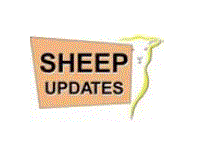Document Type
Article
Publication Date
19-7-2005
Keywords
Lambing percentages, profit, LambMax, economics, MIDAS, Ewes, lambs, colostrum, lamb survival, energy supplement, growth, Meat quality, wool, glycogen, Merino, Fat, Merino dam, Phenotypic selection, clean fleece weight, fibre diameter, body weight, Whole-farm modelling, South Coast, alternative sheep breeds, commodity price risk, Selection Demonstration Flocks, Dust Penertration, fleece weight, Mulesing, breech strike, Parasite resistance, hypersensitivity diarrhoea
Disciplines
Agricultural Economics | Biosecurity | Fiber, Textile, and Weaving Arts | Genetics | Nutrition | Parasitology | Sheep and Goat Science
Abstract
This session covers twelve papers from different authors: REPRODUCTION 1. Is it worth increasing investment to increase lambing percentages? Lucy Anderton Department of Agriculture Western Australia. 2. What value is a lamb? John Young, Farming Systems Analysis Service, Kojonup, WA 3. Providing twin-bearing ewes with extra energy at lambing produces heavier lambs at marking. Rob Davidson WAMMCO International,, formerly University of Western Australia; Keith Croker, Ken Hart, Department of Agriculture Western Australia, Tim Wiese, "Chuckem", Highbury, Western Australia. GENETICS 4. Underlying biological cause of trade-off between meat and wool. Part 1. Wool and muscle glycogen, BM Thomson, I Williams, University of WA, Crawley, JRBriegel, CSIRO Livestock Industries, Floreat Park WA &CRC for the Australian Sheep Industry, JC Greeff, Department of Agriculture Western Australia &CRC for the Australian Sheep Industry. 5. Underlying biological cause of trade-off between meat and wool. Part 2. Wool and fatness, NR Adams1,3, EN Bermingham1,3, JR Briegel1,3, JC Greeff2,3 1CSIRO Livestock Industries, Floreat Park WA 2Department of Agriculture Western Australia, 3CRC for the Australian Sheep Industry 6. Genetic trade-offs between lamb and wool production in Merino breeding programs, Johan Greeff, Department of Agriculture, Western Australia. 7. Clean fleece weight is no phenotypically independent of other traits. Sue Hatcherac and Gordon Refshaugebc aNSWDPI Orange Agricultural Institute, Orange NSW 2800 bUNE c/- NSWDPI Cowra AR&AS Cowra NSW 2794 cAustralian Sheep Industry CRC. 8. When you're on a good thing, do it better: An economic analysis of sheep breed profitability. Emma Kopke, Ross Kingwell, Department of Agriculture, Western Australia, John Young, Farming Systems Analysis Service, Kojonup, WA. 9. Selection Demonstration Flocks: Demonstrating improvementsin productivity of merinos, K.E. Kemper, M.L. Hebart, F.D. Brien, K.S. Jaensch, R.J. Grimson, D.H. Smith South Australian Research and Development Institute 10. You are compromising yield by using Dust Penetration and GFW in breeding programs, Melanie Dowling, Department of Agriculture, Western Australia, A. (Tony) Schlink, CSIRO Livestock Industries, Wembley, Johan Greeff, Department of Agriculture Western Australia. 11. Merino Sheep can be bred for resistance to breech strike. Johan Greeff , John Karlsson, Department of Agriculture Western Australia 12. Parasite resistant sheep and hypersensitivity diarrhoea, L.J.E. Karlsson & J.C. Greeff, Department of Agriculture Western Australia
Recommended Citation
Please cite papers individually
Included in
Agricultural Economics Commons, Biosecurity Commons, Fiber, Textile, and Weaving Arts Commons, Genetics Commons, Nutrition Commons, Parasitology Commons, Sheep and Goat Science Commons


